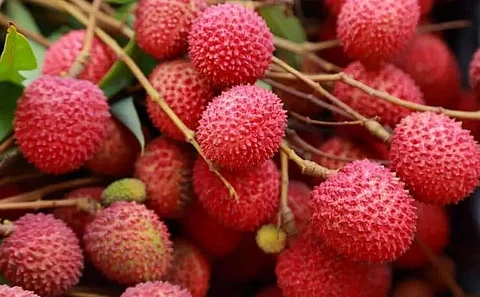
- Home
- Live Blog
- Breaking News
- Top Headlines
- Cities
- NE News
- Sentinel Media
- Sports
- Education
- Jobs

The 3rd Advance Estimates of the area and production of fruits for the year 2021-22 have brought cheers for Assam, with the state witnessing increase in both area and production. Remunerative prices, infrastructure, logistics support and better market linkage are crucial for sustaining the momentum of growth. The estimates show that the total area under fruit cultivation in the state has increased from 1.47 lakh hectares in 2020-21 to 1.64 lakh hectares, while production increased from 22.51 lakh MT to 25.40 lakh MT. The trend is reflective of the overall national growth scenario for various horticultural crops, including fruits. The total horticulture production in the country is estimated to be 342.33 million tonnes in the year 2021-22, showing an increase of about 7.73 million tonnes (an increase of 2.3%) over the year 2020-21 and production of fruits is estimated to be 107.24 million tonnes as against 102.48 million tonnes in 2020-21. The 3rd Advance Estimates of area and production of various horticultural crops for the year 2021-22, released by the Ministry of Agriculture and Farmers Welfare, project that the area under these crops has increased to 28.08 million hectares compared to 27.48 million hectares. In Assam, banana accounts for the largest share of 58,330 hectares with total production of 11.08 lakh MT, followed by total citrus on 31,010 hectares with production of 3.70 lakh MT. Production of banana in the state in 2020-21 was 9.10 lakh MT on a total area of 48,780 hectares. While the area under jackfruit (22,510 hectares) figures in the third position and is more than pineapple(17,850 hectares), the production of pineapple (3.39 lakh MT) is more than jackfruit (2.12 lakh MT) which is indicative of availability of major fruits in the state for the food processing industry and household consumption. Area under litchi has marginally increased from 6,100 hectares to 6,130 while production has also increased marginally from 60,190 MT to 60,580 MT despite high demand and popularity of special varieties like Tezpur litchi making it to London markets. Chief Minister Himanta Biswa Sarma launching the export of Tezpur litchi tagged with Geographical Indication has triggered new hopes, but following up the initiatives is key to achieving the desired goals of increasing production and area to generate more livelihood, remunerative prices and open entrepreneurial ventures in domestic and export markets through food processing and value addition. The latest promotion of Assam lemon in Delhi, Pune, Bangalore and Hyderabad is a laudable move but growers getting the fair share of the market and remunerative price are crucial for achieving the required production to meet the demand that is going to be generated through such promotion. Many growers of this unique lemon variety, which is indigenous to the state and popular for its long shelf life apart from taste, flavour and nutritious quality, complain of not having easy access to markets and remunerative price which call for intervention by the state government so that such obstacles do not disincentivize its production as an alternative livelihood option. Lack of cold storage along the value chain of food processing industry from horticultural hubs to destination markets hampering the pace of growth of area and production of fruit crops is not unknown to policy makers. Multimodal connectivity projects pushed in the region have created new potential of domestic and export markets, but fruit crops being perishable commodities, post-harvest losses in transit without a cold-chain render deprive growers from optimal return on investment. The Assam government exploring opportunities for cooperation with Thailand brings wide opportunities for giving a push to fruit production and marketing. Thailand being one of largest fruit producer and exporter has many lessons for stakeholders in Assam to learn. India's Act East Policy and deepening trade and commerce with ASEAN countries have created the ecosystem which the state can leverage to augment production and explore markets in neighbouring countries. Pushing food processing in production centres for fruit-based industries can unlock huge commercial potential for various fruits. Apart from banana grown in the state, huge quantities of banana supplied from Meghalaya to the Darranggiri market, the largest banana market in the Northeast region, are traded and supplied to states outside the region. This also speaks volumes about the opportunities of growth of banana chip manufacturing units that would have brought better prices to growers in Assam and Meghalaya and also generated huge employment and livelihood avenues. Kerala's success story in banana chip industry with a market size of Rs 600 crore demonstrates the importance of food processing and value addition to accelerate the pace of growth of fruits production and marketing. The Central and state governments have initiated many schemes and projects for boosting production of fruits and other horticultural crops in Assam and other states in the region. Identifying the gaps in these initiatives can help Assam, too, script enviable success stories of fruit production and marketing.